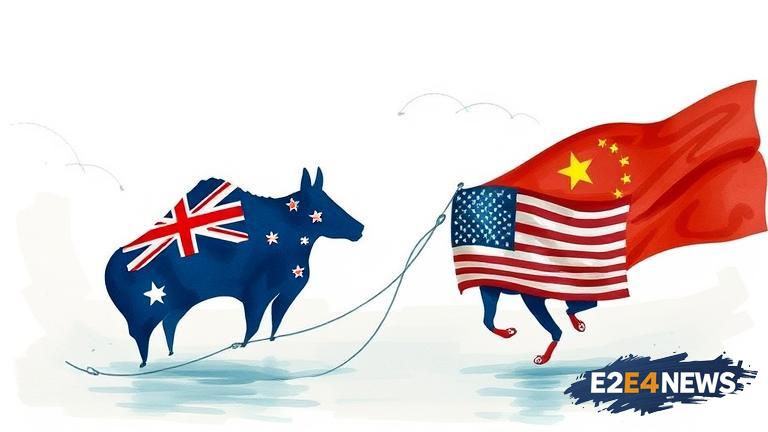Australia has been walking a fine line in its diplomatic relations with China and the US, adopting a strategy known as straddle diplomacy. This approach allows the country to maintain strong economic ties with China while also fostering a strategic alliance with the US. The delicate balance is crucial for Australia’s economic and national security interests. China is Australia’s largest trading partner, with bilateral trade valued at over $200 billion annually. However, the US remains Australia’s most important strategic ally, providing a security umbrella and cooperating on regional and global issues. The straddle diplomacy approach requires careful navigation to avoid antagonizing either power. Australia has been seeking to strengthen its economic ties with China, particularly in the areas of trade and investment. At the same time, the country has been deepening its strategic partnership with the US, including through joint military exercises and cooperation on regional security issues. The Australian government has been working to promote a free and open Indo-Pacific region, which aligns with the interests of both China and the US. However, there are also areas of tension, particularly regarding China’s growing military presence in the region and its human rights record. The US has been critical of China’s actions, and Australia has been caught in the middle, seeking to balance its relationships with both countries. Despite these challenges, Australia remains committed to its straddle diplomacy approach, recognizing the importance of maintaining good relations with both China and the US. The country’s diplomatic efforts have been focused on promoting dialogue and cooperation, particularly in areas such as trade, investment, and regional security. Australia has also been seeking to strengthen its relationships with other countries in the region, including Japan, South Korea, and India, as part of its broader strategy to promote a stable and prosperous Indo-Pacific. The straddle diplomacy approach has been subject to criticism, with some arguing that it is unsustainable in the long term and that Australia will eventually be forced to choose between its relationships with China and the US. However, the Australian government remains confident that its approach can be successful, pointing to the country’s long history of diplomatic engagement with both countries. The government has also been working to promote greater understanding and cooperation between China and the US, recognizing that a stable and cooperative relationship between the two powers is essential for regional and global security. In recent years, Australia has been actively engaged in regional forums such as the East Asia Summit and the ASEAN Regional Forum, which provide a platform for dialogue and cooperation between China, the US, and other countries in the region. The country has also been working to strengthen its bilateral relationships with China and the US, including through regular high-level visits and diplomatic exchanges. Despite the challenges and complexities of its straddle diplomacy approach, Australia remains committed to its goal of promoting a stable and prosperous Indo-Pacific region, and is working to maintain good relations with both China and the US. The country’s diplomatic efforts have been focused on promoting cooperation and dialogue, and on finding ways to balance its relationships with both countries. Australia’s straddle diplomacy approach is a unique and innovative response to the challenges of the modern diplomatic landscape, and reflects the country’s commitment to promoting peace, stability, and prosperity in the Indo-Pacific region. The approach has been subject to scrutiny and criticism, but the Australian government remains confident that it can be successful in the long term. As the regional and global landscape continues to evolve, Australia will need to remain agile and adaptable in its diplomatic approach, seeking to balance its relationships with China and the US while promoting a stable and prosperous Indo-Pacific region.
